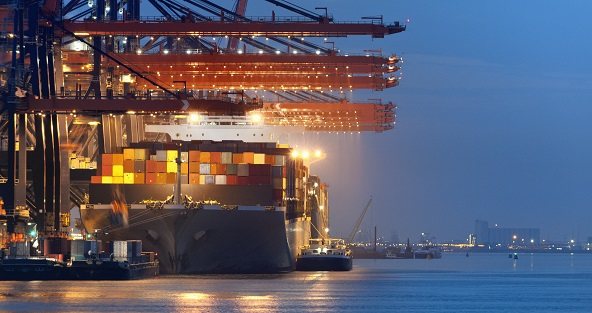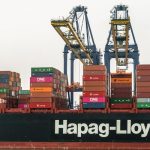Shipping companies have been the best performing stocks in Europe since the start of 2024, and were set for their biggest weekly jump in years, as the re-routing of vessels following attacks in the Red Sea boosted freight rates.
Shippers have avoided the region as a result of attacks on commercial vessels in the Red Sea since mid-November and analysts at Jefferies say liners controlling more than 85% of global fleet capacity have diverted services utilising the Red Sea mostly around Africa.
Danish shipper Maersk, MAERSKb.CO which controls about one-sixth of global container trade, said on Friday its vessels would continue to avoid the Red Sea which gives access to the Suez Canal, a shortcut between Asia and Europe that avoids circumnavigating the southern tip of Africa.
Sailing around Africa adds at least 10 days of travel time and that has already shown up in freight rates – Asia to Europe prices have nearly doubled since mid-December to more than $4,000 per forty-foot equivalent unit (FEU), Freightos data showed as of Jan. 3.
This is good news for shipping stocks.
Maersk shares are up over 17% this week alone, their biggest weekly jump since April 2009, making them the biggest gainer in Europe’s benchmark.
They are up around 40% since the middle of December, rising from around a three-and-a-half year low.
Rivals Hapag Lloyd shares have jumped 23% this week, their biggest weekly rise since March 2022. Frontline FRO.OL shares are up over 8% – the STOXX 600’s third biggest gainer – and Italy’s D’Amico B7C.MI is up 3.5%.
“Shipping companies have high operating leverage and any move in revenues quickly falls to the bottom line,” said Tom Gilbey, equity research analyst at Quilter Cheviot.
“Given around 30% of volumes are typically at spot rates, this will drop down quickly into profit as there is limited incremental cost to these revenues.”
To be sure, the sustainability of the rally depends on what happens on the water.
“If freight rates stay where they are – I think they are likely to in the short-term – then that does underpin the share prices. If we see any easing of the situation then they will probably fall quite a lot,” Dan Boardman-Weston, CEO and CIO at BRI Wealth Management, who is nervous about the sector’s cyclical nature.
THE RIGHT TIME
Rising freight rates come at a good time for the shipping companies after a disappointing 2023, when profits fell as disruptions around ports eased and global demand worsened – bad news for firms which had invested heavily in new container ships during and after the pandemic to meet strong demand.
In November, Maersk, said it was cutting 10,000 jobs following a steep drop in third-quarter profit in the face of over capacity. Hapag Lloyd, at its November results, announced a 77% drop in net profit for the first nine months of the year.
“If you saw this (Red Sea disruption) happen in normal times, the share price might go up a little but because the overcapacity situation is so bad, markets are latching onto this,” said Michael Field, European market strategist at Morningstar.
“It’s come at a good time for the shipping companies.”
Source: Hellenic Shipping News






